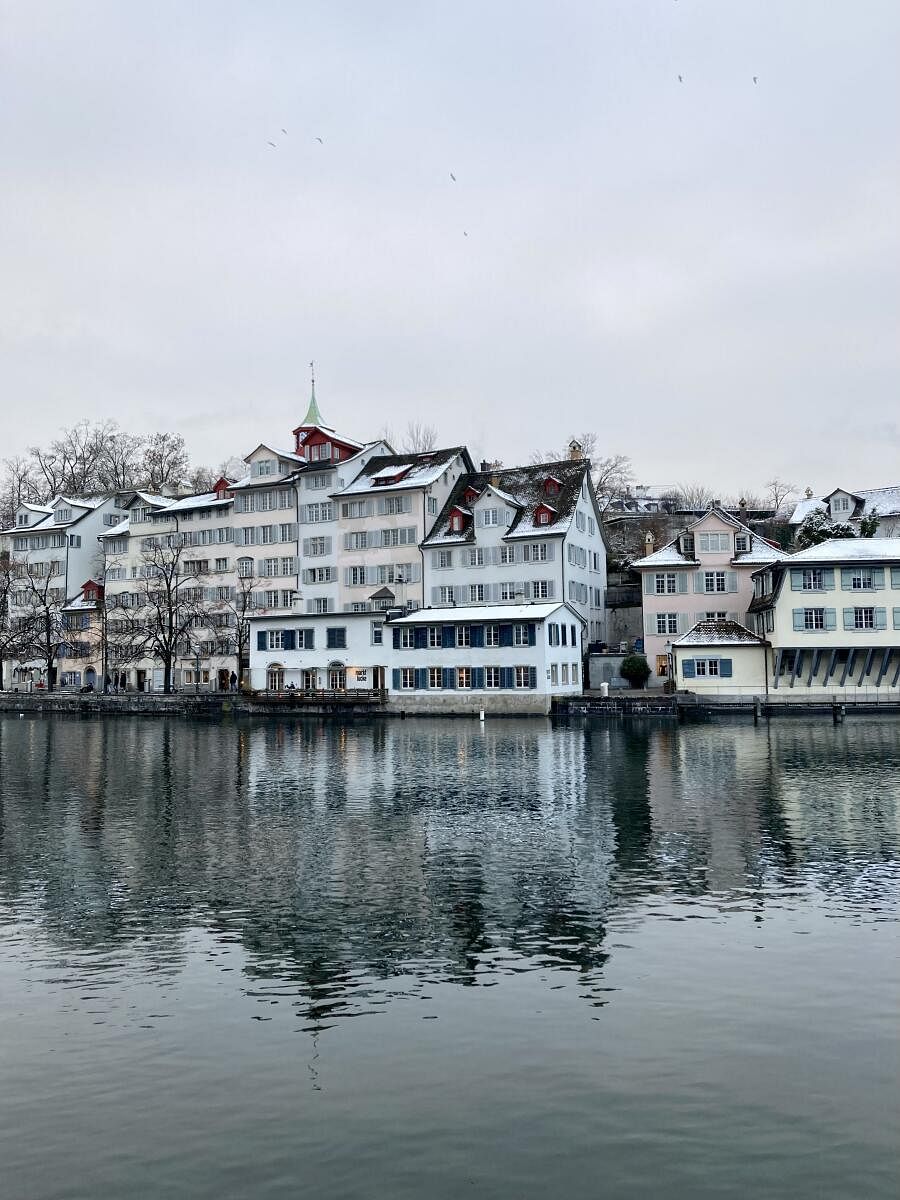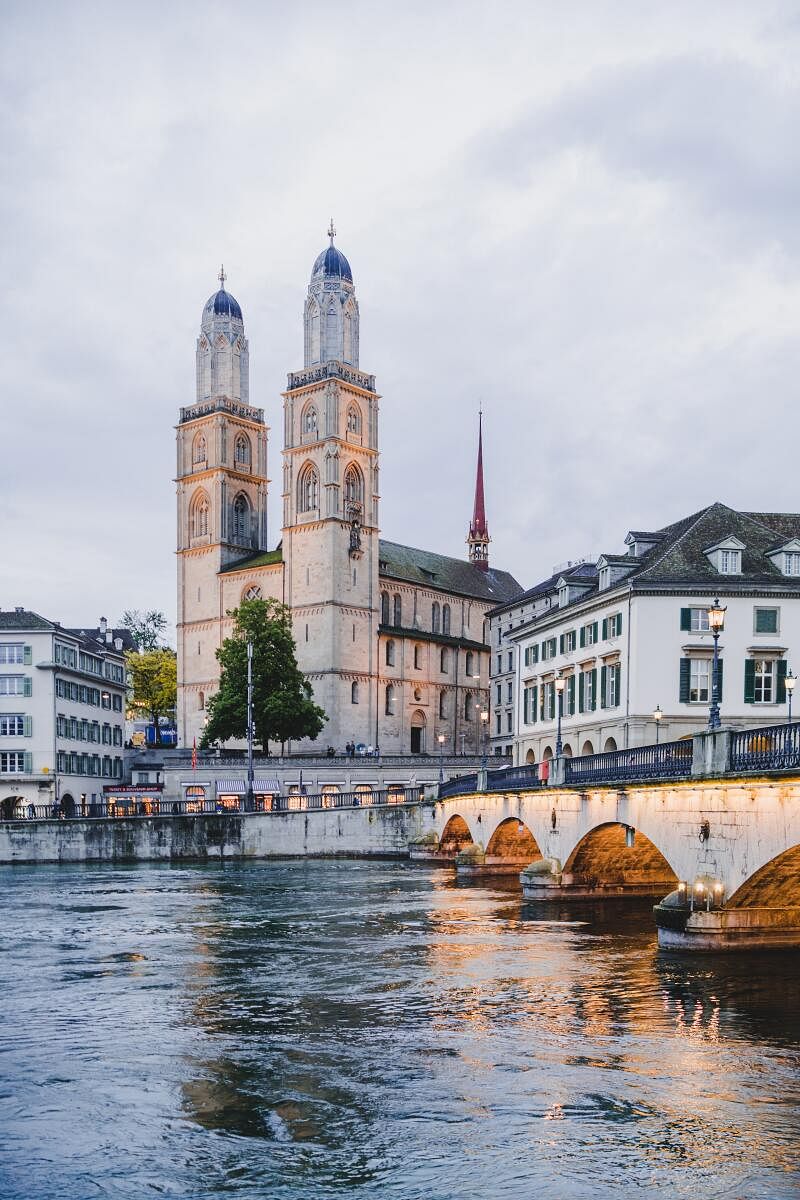

At Hirschenplatz, one of Niederdorf’s oldest squares, Gardux readies to take centre stage in front of Hotel Hirschen. The Colombian artist, whose music is considered a bridge between Latin America and Europe, waits for his saxophonist friend to join him before belting out tunes on his guitar. I watch the buskers duet among a crowd of eager onlookers, who’ve gathered at the plaza for a taste of fanfare at one of Zürich’s oldest market squares. The lyrics flow in an unfamiliar tongue, but partaking in local traditions is a language I’m well-versed in. It is how I make an effort to feel closer to cultures other than my own.
An iconic square
The square — tucked in the heart of Altstadt (Old Town) — has borne witness to iconic moments of artistic genius throughout history. I learn with the introduction of ‘Die Pfeffermühle’ (1933 to 1936), a political piece by Erika and Klaus Mann and Therese Giehse, Cabaret came to Zurich. Interestingly, the famous Cabaret Cornichon that ran between 1934 and 1948 was performed at the Hirschen’s stage. The venue soon became sought after for live concerts from the early 1960s to 1997. My mind conjures vivid images of Pink Floyd, Ozzy Osbourne with Black Sabbath wooing the audience with magnificent grace and finesse. Just then, Gardux’s sweet symphony nudges me back to reality.
Switzerland’s biggest city also boasts a big heart. And part of its charm lies in endearing moments such as waking up to the sight of fresh snow settled on the rooftops of homes, savouring scalding currywurst at Sternen Grill — Zurich’s only street food joint — and admiring world-class art in Kunsthaus Zürich. Its only skyscraper — the 413-feet Prime Tower, the second tallest in the country to Basel’s Rocher Turm Bau 2 — stands in the emerging business district of Zurich West, although every other low-rise seems ostentatious, especially in District 1, where I am based at a red-walled, 700-year-old hotel. “Most houses you see belong to the Medieval Ages and were built from the 12th century onwards,” my guide Ity Tiwari helps me get under the skin of the city as we embark on a leisurely stroll. “The infrastructures as we see today have been modified to an extent,” she adds before stating that most structures started out as small rooms as people had less spending power back in the day. The facades are splashed in subtle shades of green, yellow, grey, and white, while the presence of distinguished red indicates a Rothaus — the city’s most notable establishments, where visiting guests of the government often stayed. Narrow, steep cobblestone roads cut through alleyways dotted with boutique hotels, quaint cafés, and retail shops in Niederdorf (meaning low village), otherwise fondly referred to as “Dörfli” by the locals. In the evening, the pedestrian zone transforms into a nightlife district for a very varied public with its bars and street artists. The area sits to the right of the Limmat, Zurich’s main river that was once a customs point when the city was under Roman rule for about six centuries.
“Turicum,” Ity declares, was the ancient name given to Zurich by its erstwhile rulers. We walk across Rathausbrücke — a pedestrian bridge colloquially called Gmüesbrugg — a popular public square connecting Limmatquai street, and the Weinplatz plaza (wine square) and the historical Schipfe quarter. “When the Romans came in 15 BC, they brought wine with them. Hence, the name.” Apparently, the square also hosted frequent fruit and vegetable markets since the 16th century as is evident in the carvings near the structure’s windows. On the left, tiny pillars jutting from the ground indicate the presence of a harbour from the Celtic and Roman times. “Zurich has plenty of guild houses since the guilds ruled the city for many 100 years,” Ity explains. “They had an association for the boatsmen, the butchers, the shoemakers, among others. Today, many of these spots have been turned into restaurants.”
The hard-to-miss twin towers
To my right, a giant Christmas tree, several eateries, and internationally-acclaimed couture labels reveal themselves, while tram pathways and myriad structures frame the row overlooking the Limmat to my left. The twin towers of Grossmünster (Great Minster), aligned with the latter, are hard to miss. The 12th-century Protestant church is imposing and its past is steeped in a legend that harks back to its origin story. It is believed that Charlemagne discovered the graves of Felix and Regula — the city’s patron saints — and had a church built as a monastery on the spot. In the 16th century, Ulrich Zwingli started working as a pastor at the Grossmünster and this was the beginning of the Swiss protest reformation led by Zwingli and followed by many. The rival Fraumünster, equally iconic with its green tower, is another significant architectural landmark in the city. The structure’s most prized possession includes its stained-glass windows; the five-part cycle in the chancel and rosette in the southern transept features the works of Marc Chagall. Fortunately, it isn’t the artist’s only body of work that the city safeguards. A few of Chagall’s paintings, including “The Russian Wedding,” hang on the walls of Kunsthaus Zürich. Art and faith are two sides of the same coin. And Zurich is blessed with both.